Sinigang na Baboy is the ultimate comfort food! Made with pork ribs, vegetables, and tamarind-flavored broth, it's hearty and delicious on its own or served with steamed rice.
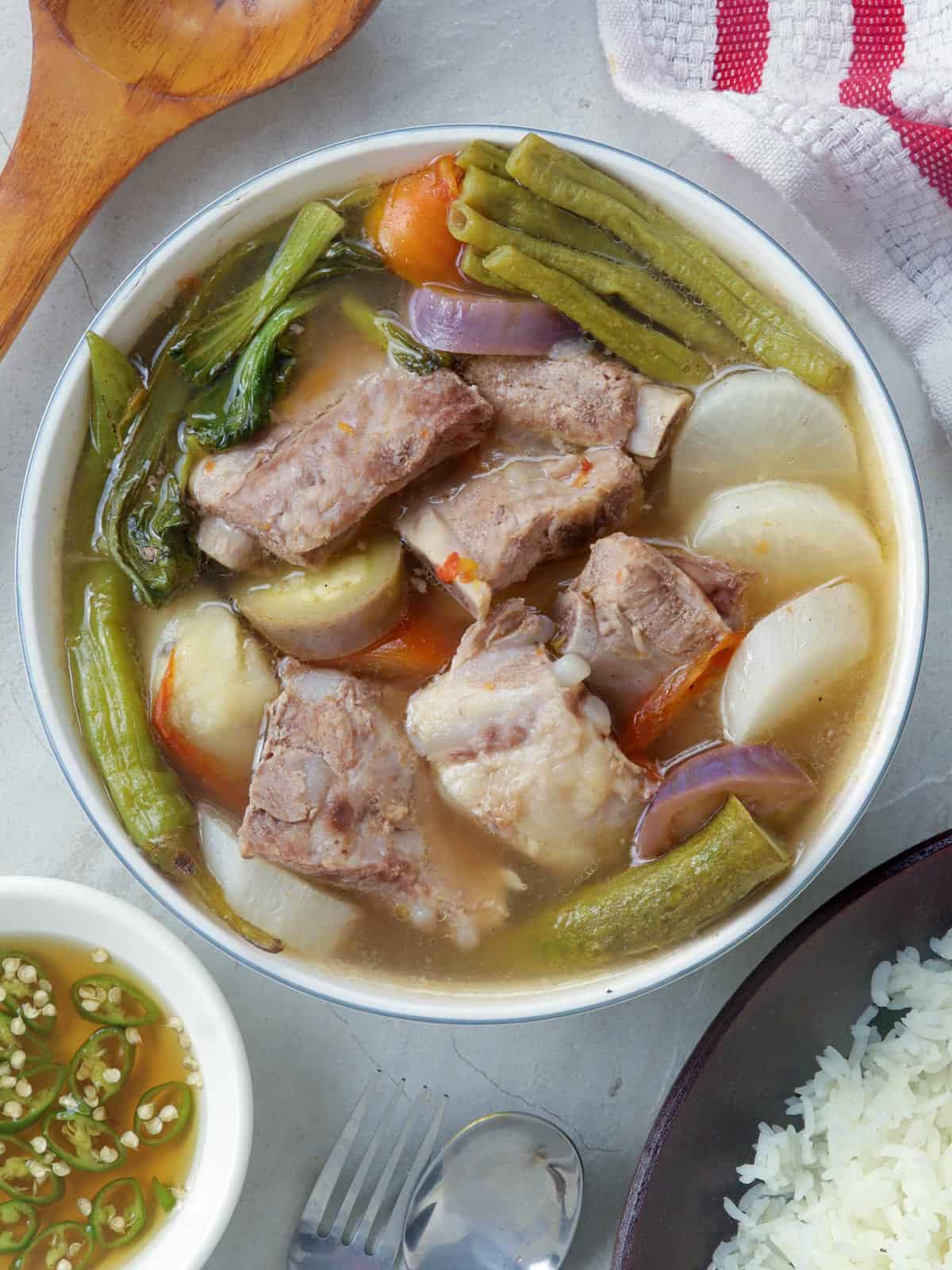
Today has been a cold and wet day, with rain intermittent throughout. It was the kind of weather that calls for a piping-hot pot sinigang na baboy, which was what I made for lunch.
Chockful of crisp-tender vegetables and meaty ribs thick with tamarind's sourness, my steaming bowl of soup provided much-needed comfort against the harsh weather outside. It was delicious, filling, and the perfect way to warm up!
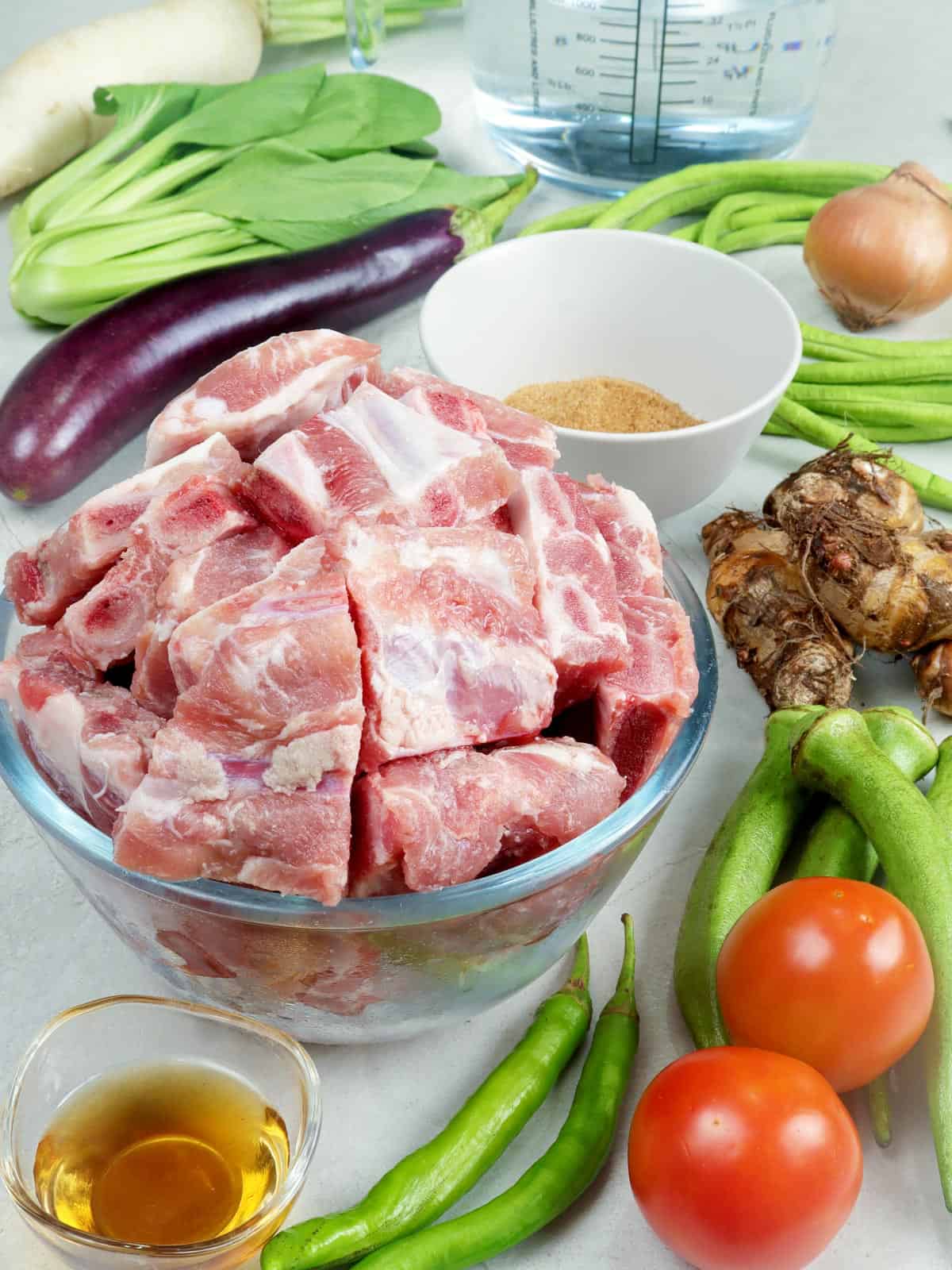
What is Sinigang
Sinigang is a classic Filipino soup characterized by its sour and savory medley of flavors. It's popular comfort food in the Philippines, usually served on its own or paired with steamed rice on rainy days to ward off the cold.
Like adobo, the term sinigang describes a cooking method more than a particular dish, as it has many variations. It can be made with protein such as pork, fish, shrimp, beef, and chicken and souring agents such as tamarind, guava, green mango, calamansi, kamias, batuan, santol, and other native fruits.
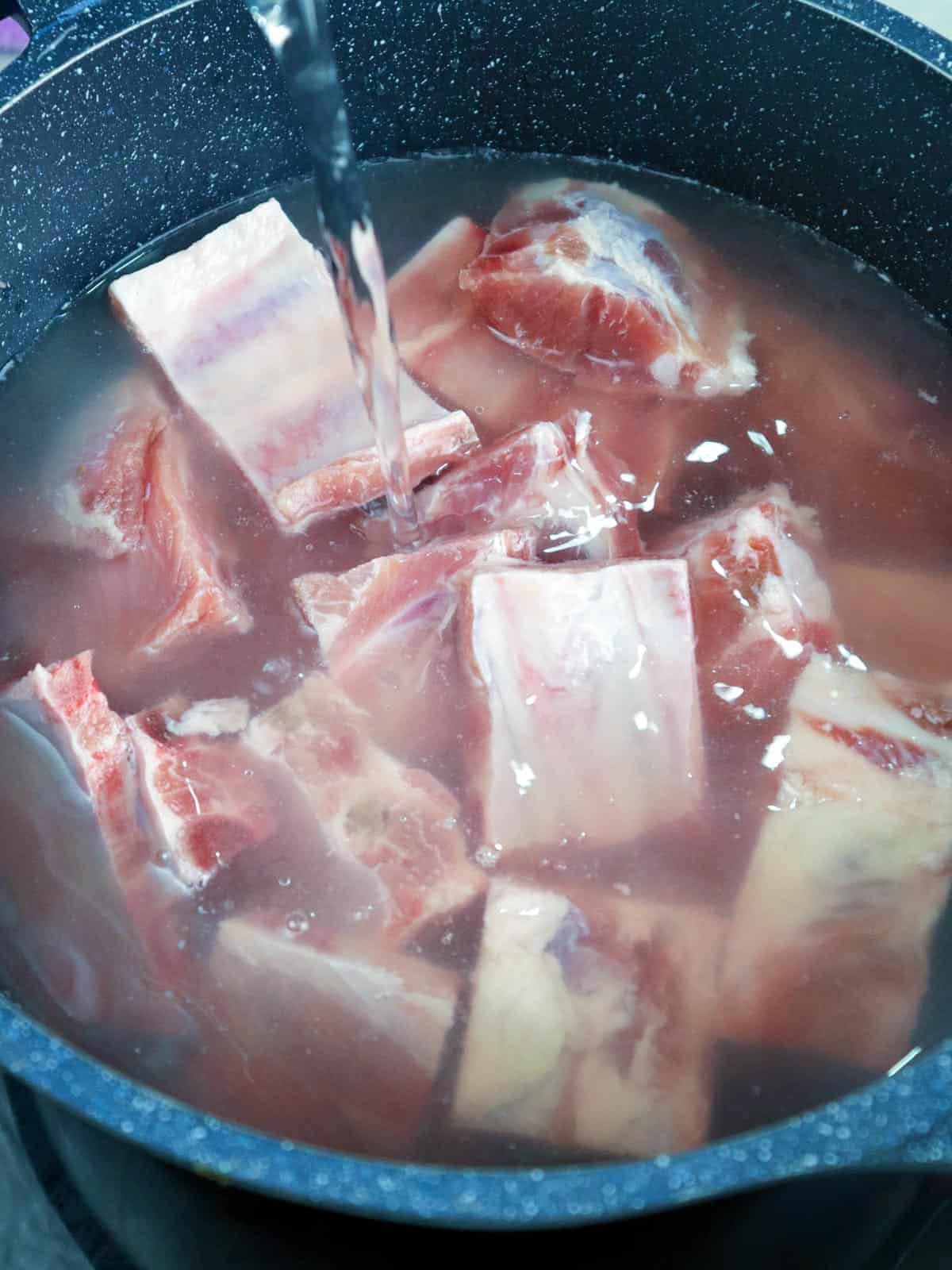
Ingredients
- Pork-while you can use meatier and leaner parts such as pork shoulder (kasim), I recommend bony cuts such as spare ribs, pork belly with ribs, hocks, knuckles, and tailbone or neck bones for better flavor.
- Tomatoes- use ripe, juicy tomatoes
- Onion-peeled and quartered
- Fish sauce- brings umami flavor; you can swap it with salt if you prefer
- Gabi- adds a starchy component to the dish and thickens the broth
- Radish (labanos)
- Vegetables- the recipe uses sitaw (long beans), eggplant, okra, and bok choy, but feel free to include other local produce available such as kangkong (water spinach) and pechay
- Tamarind- can be fresh pods, paste, or powder mixes
- Banana or finger chili peppers (siling haba)-adds a mild heat; optional and can be omitted
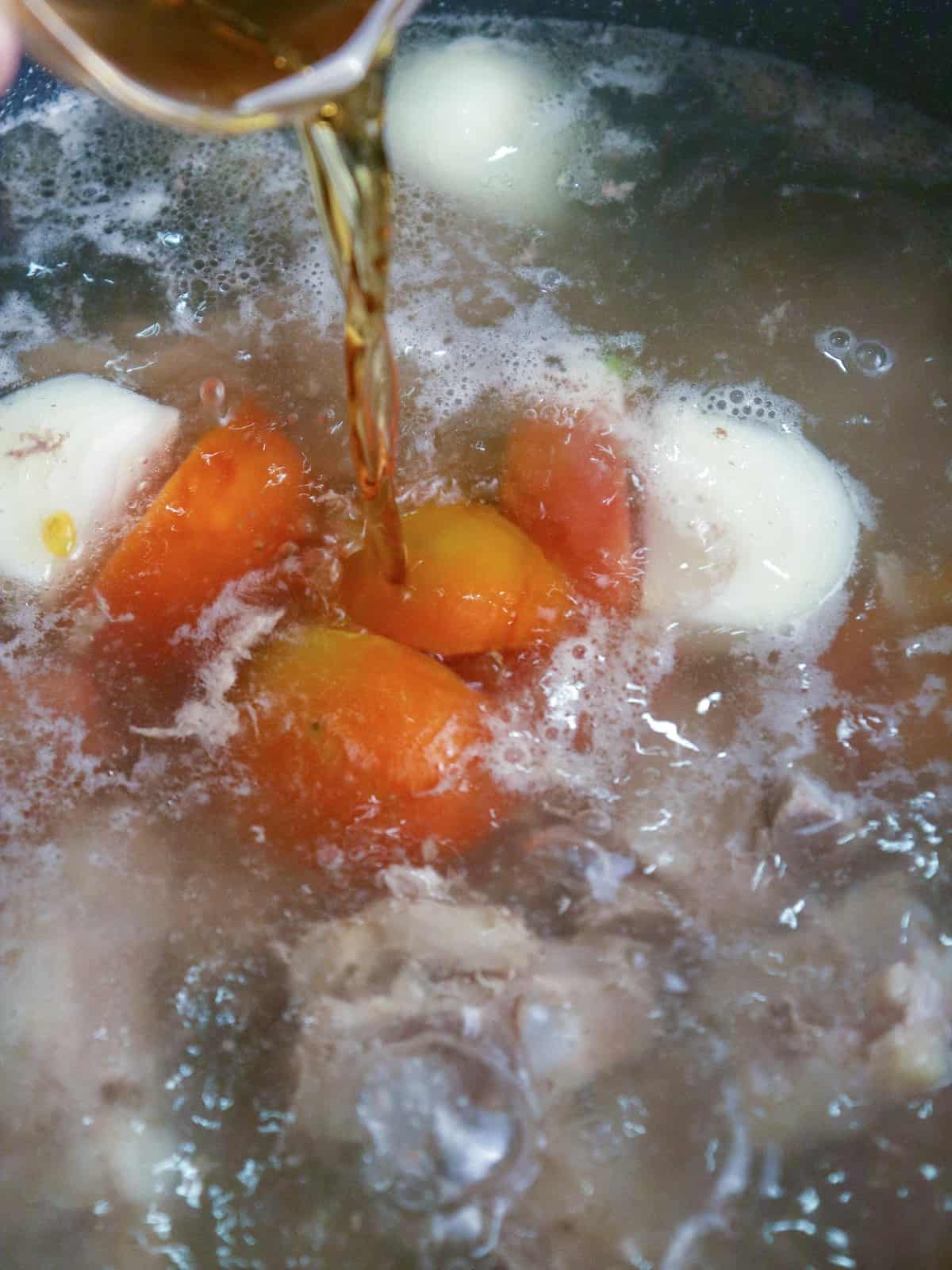
How to make from scratch
I usually use packaged tamarind mixes as the fresh fruit is not always available in my area. Although these powder flavorings are easy and convenient to use, nothing beats pork sinigang from scratch! Just follow the steps below on how to use green tamarind pods.
- Wash tamarind pods under cold, running water to remove any grit or dirt from the skins.
- Place in a saucepan with about 1 cup water and bring to a boil. Cook for about 4 to 5 minutes until soft, and the outer skins begin to burst.
- Using a fork, mash the tamarinds to release the pulp.
- Place the tamarind and liquid in a fine-mesh strainer set over a bowl. Continue to mash with a fork, returning some of the liquid into the strainer once or twice to fully extract the juice.
- Discard seeds and skins. Pour tamarind juice into the pot.
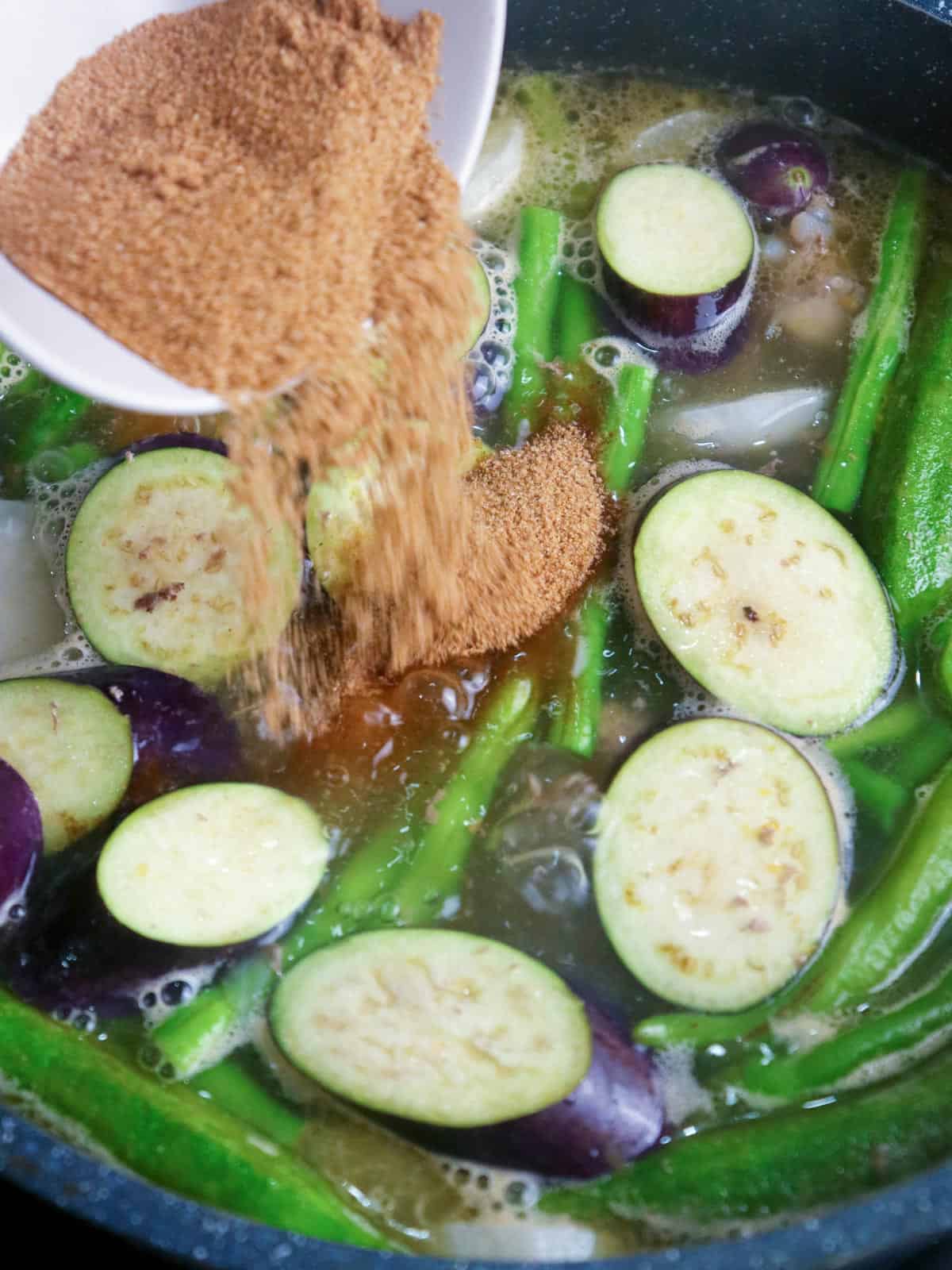
Cooking tips
For a clearer broth, you can parboil the meat. Bring to a boil, drain, and discard liquid. Rinse the meat and pot well and continue cooking with fresh cold water. Tend to the soup regularly by removing scum that accumulates on top.
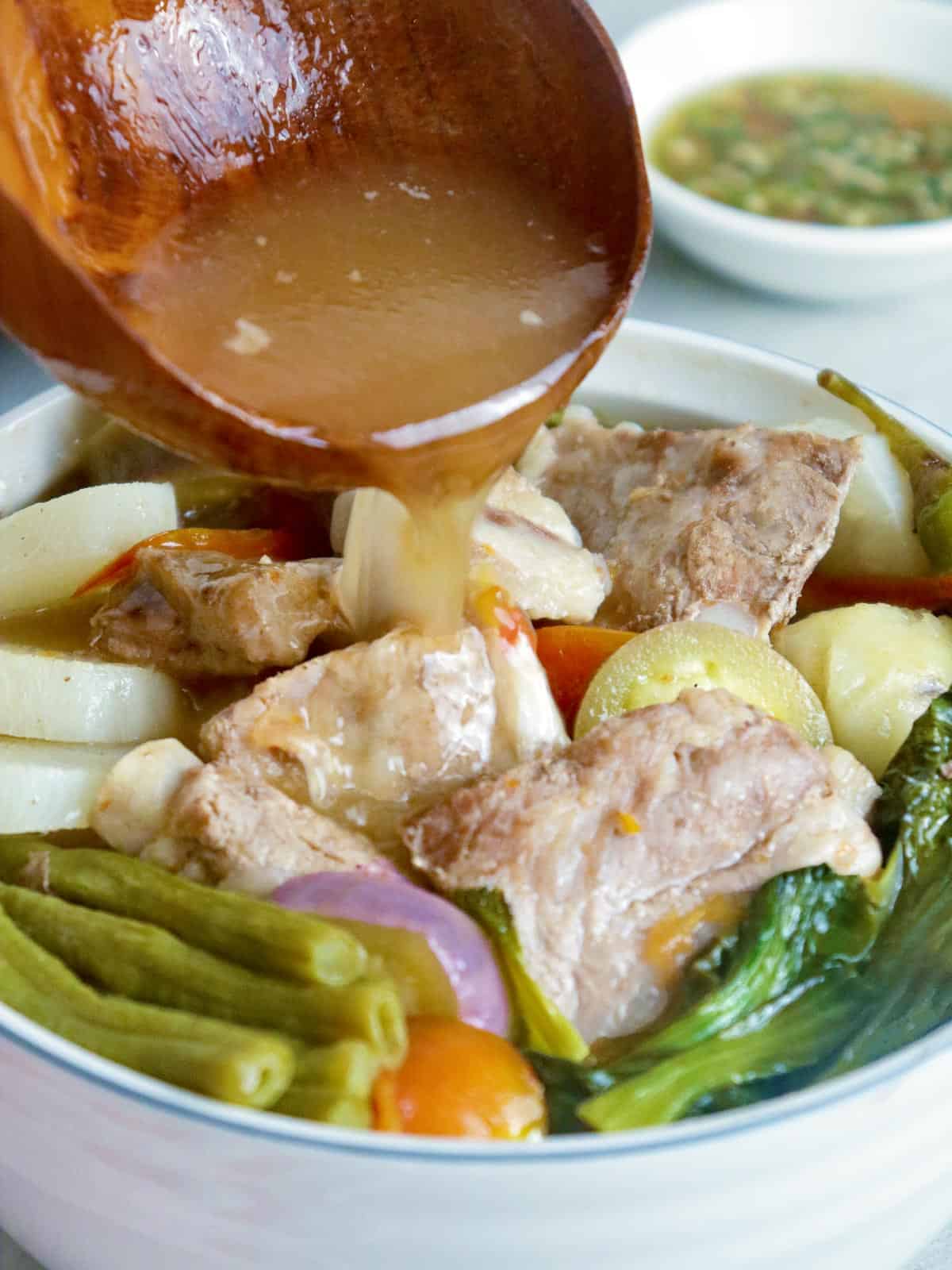
How to serve and store
- Pork sinigang is delicious on its own or with steamed rice. For the complete experience, serve it with fish sauce and chili peppers on the side for dipping.
- Store leftovers in a container with a tight-fitting lid and refrigerate for up to 3 days.
- Reheat in a saucepot to an internal temperature of 165 F or in the microwave at 2 to 3-minute intervals until completely warmed through, stirring well after each interval to distribute heat.
Enjoy this delicious pork sour soup, and keep warm, my friends!
Ingredients
- 2 pounds pork spare ribs, cut into 2-inch pieces
- 8 cups water
- 2 large tomatoes, quartered
- 1 medium onion, peeled and quartered
- 2 tablespoons fish sauce
- 6 pieces gabi, (peeled and halved depending on size)
- 1 6-inch radish (labanos), peeled and sliced to ½-inch thick half-rounds
- 2 finger chilies (siling haba)
- ½ bunch long beans (sitaw), ends trimmed and cut into 3-inch lengths
- 1 eggplant, ends trimmed and sliced to ½-inch thick half-rounds
- 6 pieces okra, ends trimmed
- 15 pieces large tamarind or 1 ½ (1.41 ounces each) packages tamarind base powder
- salt and pepper to taste
- 1 bunch bok choy or pechay, ends trimmed and separated into leaves
Instructions
- Rinse pork ribs and drain well.
- In a pot over medium heat, combine pork and enough water to cover. Bring to a boil, skimming scum that accumulates on top.
- Once broth clears, add tomatoes, onion, and fish sauce. Lower heat and simmer for about 1 to 1 ½ hours or until meat is tender, adding more water as necessary to maintain about 8 cups.
- Add gabi and cook for about 4 to 6 minutes or until tender.
- Add chili peppers and radish. Continue to simmer for about 2 to 3 minutes.
- Add long beans. Continue to cook for about 2 minutes.
- Add eggplant and okra and cook for another 1 to 2 minutes.
- If using packaged tamarind base, add to the pot and stir until completely dissolved.
- Season with salt and pepper to taste.
- Add bok choy and continue to cook for about 1 minute. Serve hot.
If Using Fresh Tamarind
- Wash tamarind and place in a saucepan with 1 cup water. Bring to a boil and cook until soft and outer skins begin to burst.
- With a fork, mash tamarinds.
- In a fine-mesh strainer set over a bowl, pour tamarind and liquid. Continue to mash with a fork, returning some of the liquid into the strainer once or twice, to fully extract the juice.
- Discard seeds and skins. Pour tamarind juice into the pot of sinigang.
Notes
Video

Nutrition Information
“This website provides approximate nutrition information for convenience and as a courtesy only. Nutrition data is gathered primarily from the USDA Food Composition Database, whenever available, or otherwise other online calculators.”

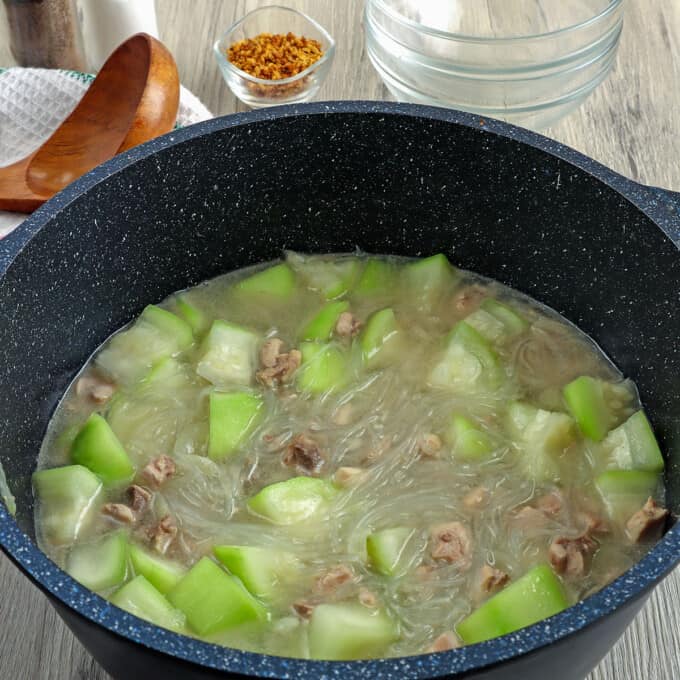
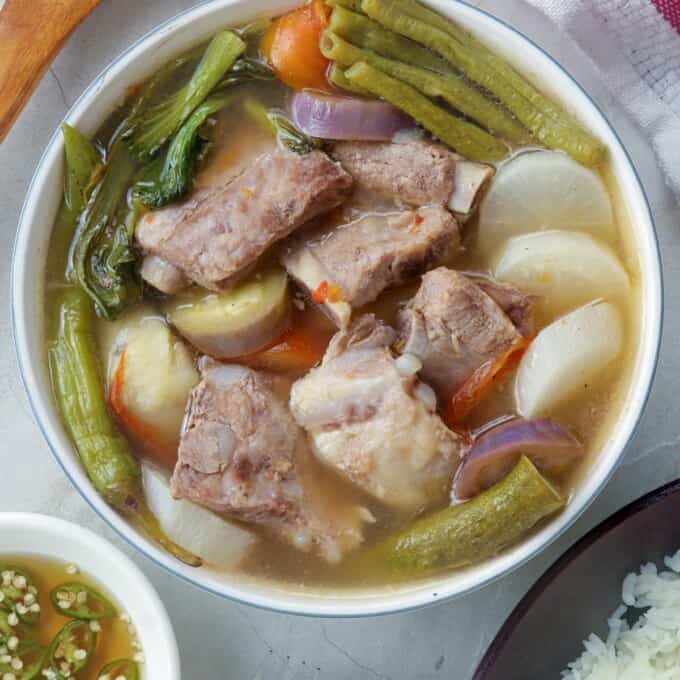
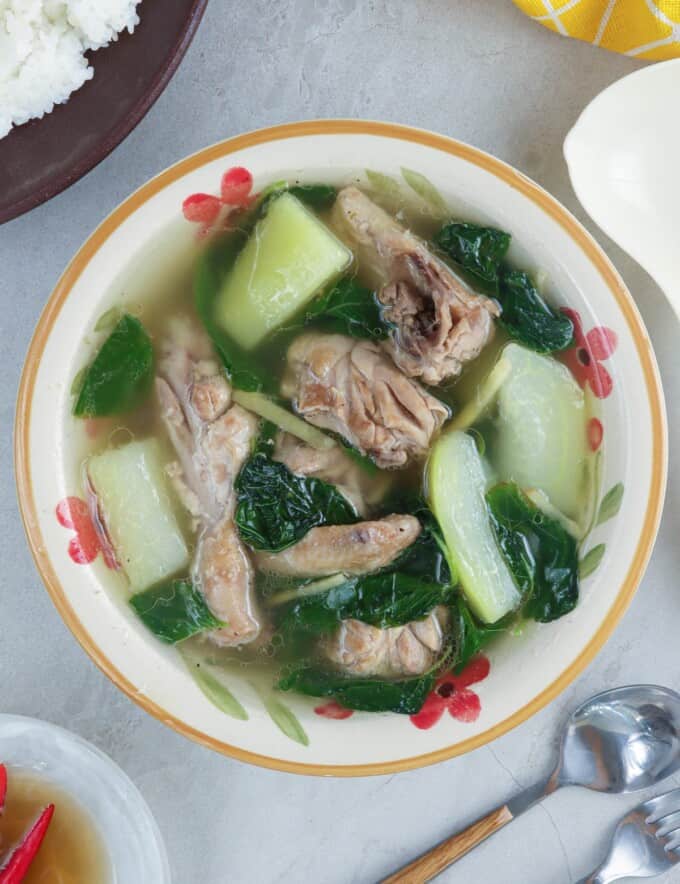
Michelle says
This is exactly how my mom used to make it growing up! Thank you for allowing me to taste my mother's cooking once again ❤️
Oliver says
My dad cooks this a lot!! I love ittt!!
Isabelle says
The best! I also added spinach
Cyrus says
Yumy yumy
steved says
The Sinigang I had a sour taste. I am wondering how you can achieve that with out using packaged seasoning.
Minda Linehan says
How much tamarind paste to use?
elle says
my favorite!!!
Caitlin says
Hello,
Thank you for sharing these pork ribs Sinigang soup recipes. I am looking forward cooking pork ribs sinigang soup. The question are, where are siling haba and tamarind base buy from? Thank you
Reg says
I love this recipe dont know why its only 3.9 stars but you got my vote lol its a yes from me tastes just like my dads cooking…LOVE LOVE LOVE!!! Thank you so much
Rudy M says
I simply like your recipes. Simple. Practical. I don't bother searching recipes from other Pinoy recipe sites. Plus, alternative ingredients are suggested. Thank you! I am based in Lesotho.
John Vela says
I made this today for my Filipina wife, because she loves sinigang, and I'm now a household hero. She loves it. Good stuff, thank you.
Meriam Witton says
Thanks for your simple and very easy to follow recipes. Right now I am cooking sinigang na spare ribs.
ria says
poggers!!!!!!
your big fan says
of all the filip cooking websites, i find yours the most interesting, organized, practical, informative, neat..the recipes are all my faves, and you do have a knack not just for food but for words as well. too much talent in one person! you also use simple cooking materials, making everything look simple and do-able.
planning to make pritong lumpia using ubod and singkamas. what's the best substitute for singkamas?
thank you!
Lalaine Manalo says
Thank you so much! You made my day! You should see the smile you brought to my face 🙂
Ana says
About how many tamrind pods do you suggest to use?
Thanks!
Lalaine Manalo says
Around 15 pods 🙂
Michelle says
This is exactly how my mom used to make it growing up! Thank you for allowing me to taste my mother's cooking once again ❤️
Lalaine Manalo says
You're welcome. Food memories are the best 🙂